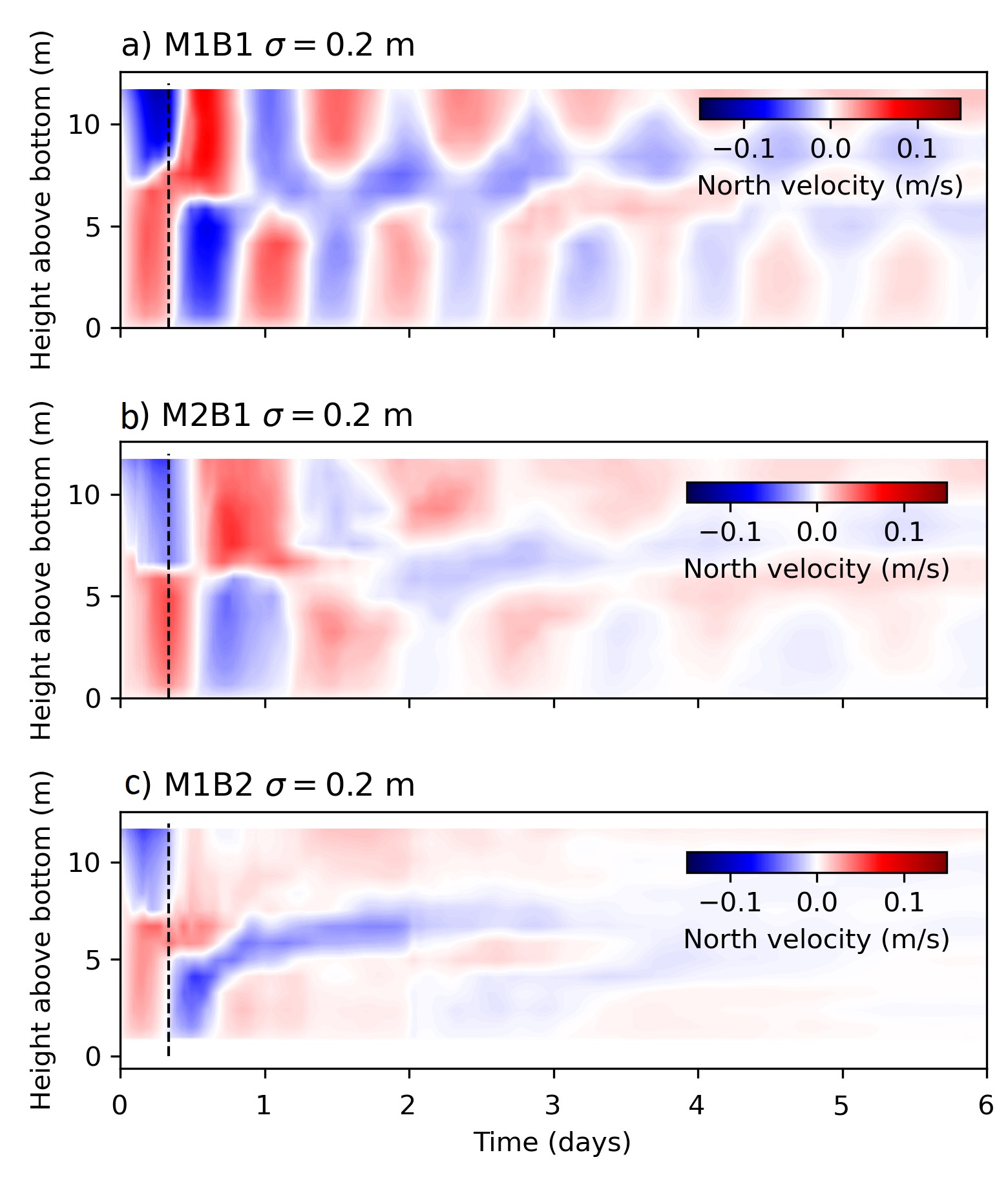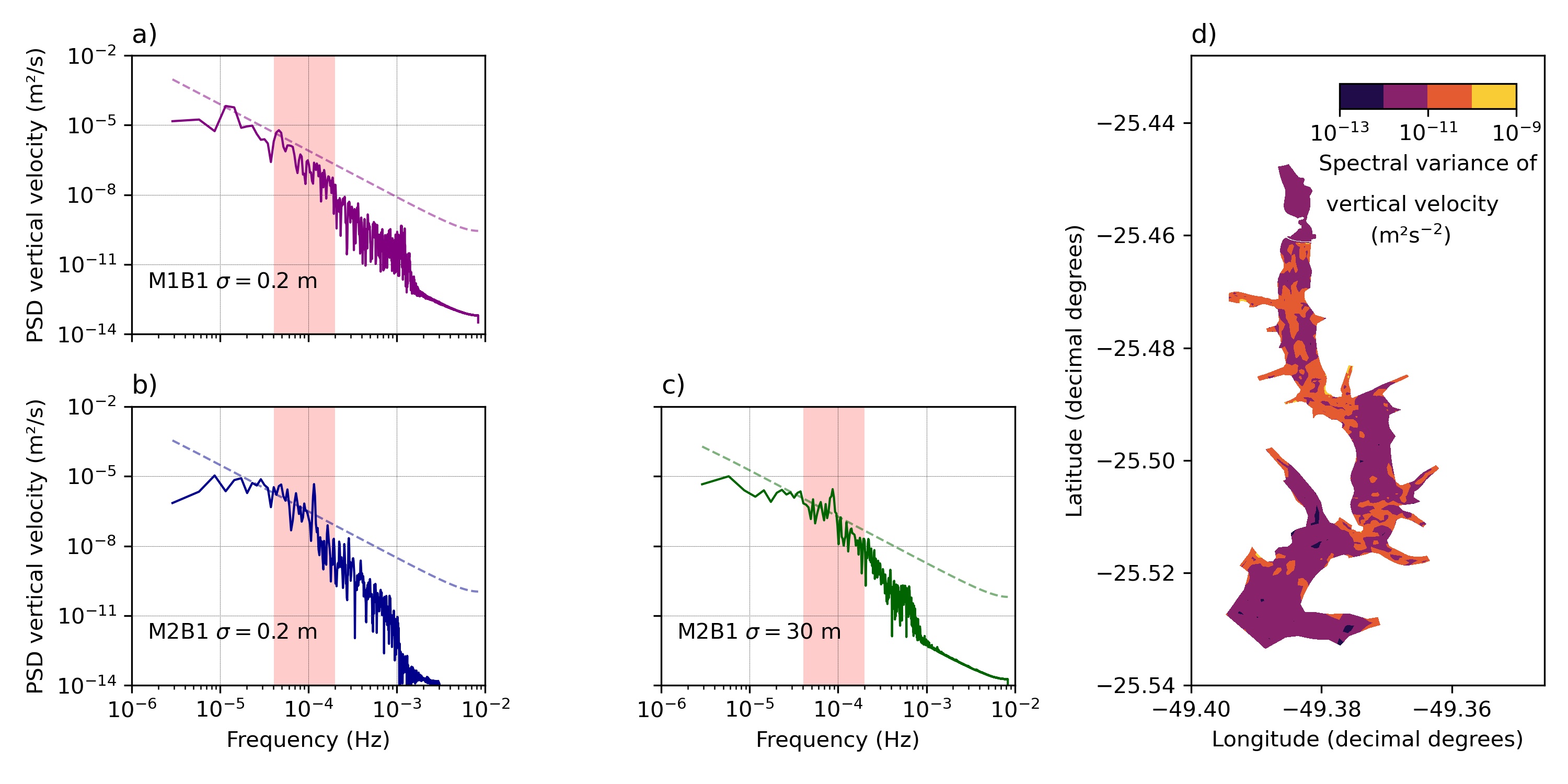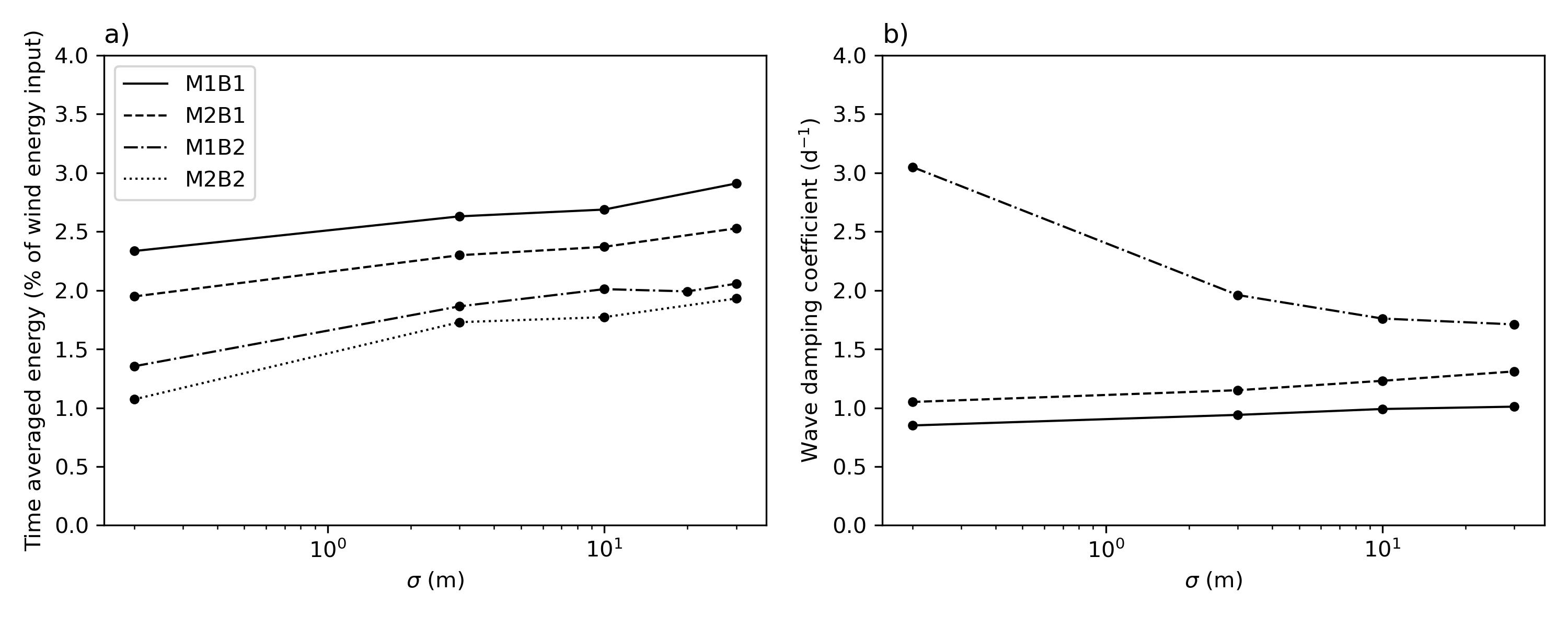Internal seiche damping & lake mixing regimes
The aim of this study is to analyze how basin bathymetry, morphology, and density stratification modify the distribution and dynamics of energy in internal seiches assuming a Wedderburn number in the order of unity, which according to theoretical analysis indicates the occurance of uppwelling events and persistent internal seiche activity (Spigel and Imberger, 1980; J. Phys. Oceanogr.).
Even though common classification schemes for mixing dynamics in stratified waters based on the Wedderburn number suggest a predominating role of basin scale internal seiches in Passaúna Reservoir, persistent oscillatory flows could not be identified in the power spectra of measured and simulated flow velocities (Ishikawa et al., 2021; Inland Waters and de Carvalho Bueno et al., 2023; Environ. Fluid Mech.). For more information about the analysis of internal seiche in Passaúna reservoir, click here.
To investigate the influence of morphology, bathymetry, and density stratification profile on internal seiche generation and dynamics, 17 distinct hypothetical scenarios were simulated (Fig 1). For all hypothetical scenarios, the internal seiche field was excited by a single wind event with a constant wind speed of 4 m/s from North and with 8 h duration.

The proposed hypothetical scenario M1B1 (Fig 1d) is based on the most simple geometry, where the basin was defined as a straight channel that was aligned with the wind direction and a constant depth of 12 m. From Fig 2a we can see the generation and evolution of a persistent internal wave, presenting small energy dissipation.
In scenario M2B1 (Fig 1c), the basin was defined to have the shape of Passaúna reservoir, but a constant water depth of 12 m. The presence of reservoir bends and irregularities increased the period of the generated fundamental internal seiche by 32 % compared to the first scenario (de Carvalho Bueno et al., 2023; Environ. Fluid Mech.), which coroborates with previous observation for surface standing waves (Rueda and Schladow, 2002; Limnol. Oceanogr.). In addition, a higher dissipation of energy compared to the first scenario can be observed.
Our results suggest that the interactions of the internal seiche with the reservoir boundaries leads to the generation of higher frequency flow variations (Fig 3c), indicating an energy transfer from basin-scale motion to higher frequency waves or to dissipative flow structures, especially in regions where the longitudinal flow direction was deviating from a straight channel (Fig 3d). This mechanism extract energy from the internal seiche field, leading to a faster internal seiche damping.
The scenario M1B2 (Fig 1b) was defined to have the simplified rectangular-shaped, but with an adjusted bathymetry similar to the one from Passaúna reservoir. The consideration of the sloping reservoir bed resulted in additional interaction between internal seiche and sloping boundary. Former studies showed that shear induced convection can promote a destabilization of the bottom boundary layer during upslope flow conditions (Lorke et al., 2008; Geophys. Res. Lett.). This can be represented by the increase of mixing near the lakeshore, which is observed during the interaction between the internal seiche and the lake bathymetry in our simulations, when the wave propagates upslope.


Significant amount of energy is dissipated in the first interaction with lake boundary (Fig 4a). When the wave propagates up to the shore, under a sloping boundary condition, internal seiche interacts with lake bottom creating overtuns, indicating that most part of the energy is lost by mixing due to this mixing mechanism.
In addition, to the faster wave dissipation, the sloping boundary contributes to transfer energy from fundamental to higher vertical modes, as we can observed on the structure profile of simulated horizontal velocity
The transference of energy from fundamental to higher vertical mode can be easily identified through the transition between a two-layer to a three-layer flowing in the opposite directions (Fig 2c).
During this process high amount of energy is lost from the fundamental internal seiche mode mainly during the first interaction with the bathymetry. As observed, most of that energy is tranfered to higher vertical mode, but the total energy of the internal seiche field decrease exponentially during the whole period of analysis, presenting energy decay much grater than the value observed from other scenarios.
Assuming the contribution of morphology (Fig 1c) and bathymetry (Fig 1d), we may observe that both processes contributes to the attenuation of internal seiche field, however part of the energy that interacts with bathymetry is transfered between internal seiche modes. This effects is strengthened when the stratification deviates from the two-layer system, which indicates that more energy is transfered to higher vertical modes.
